Ranitomeya Tadpole Care: 32-ounce Cup Method
I want to preface this tutorial by saying that I’m certainly not reinventing the wheel here as this technique for rearing Ranitomeya tadpoles has been used for decades. Since Ranitomeya tadpoles are highly cannibalistic, I raise them singly in 32-ounce deli cups. There are several methods for raising tadpoles, and I encourage you to research other methods to see if any of them suit you and your frogs’ needs better than the cup method.
Supplies:
32-ounce deli cup with fabric lid (like the ones used for fruit fly cultures)
Reverse osmosis or spring water
Seachem Replenish, SaltyShrimp Shrimp Mineral GH/KH+, or a similar product to remineralize reverse osmosis water
Indian almond leaves
Java moss
Turkey baster (used to remove detritus, transfer tadpoles, and do water changes)
Tadpole food - there are many commercially-available tadpole foods on the market, and you can also use commercial fish flakes and/or pellets
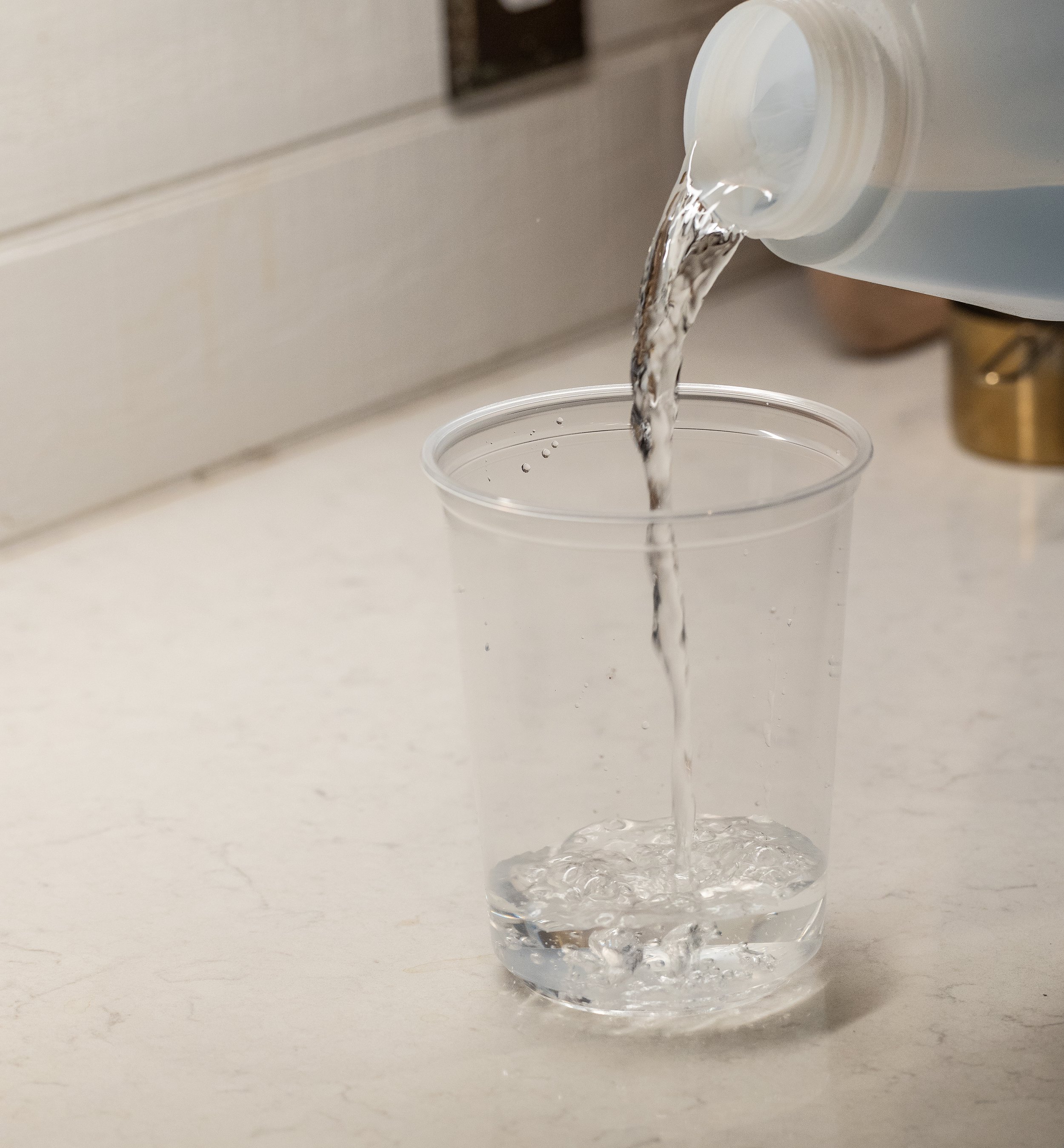
Fill a 32-ounce deli cup about 1/3-1/2 full with reverse osmosis or spring water. Reverse osmosis can be remineralized with products such as SaltyShrimp Shrimp Mineral GH/KH+ or Sachem Replenish. Remineralizing RO water isn’t necessary, but I recommend it.


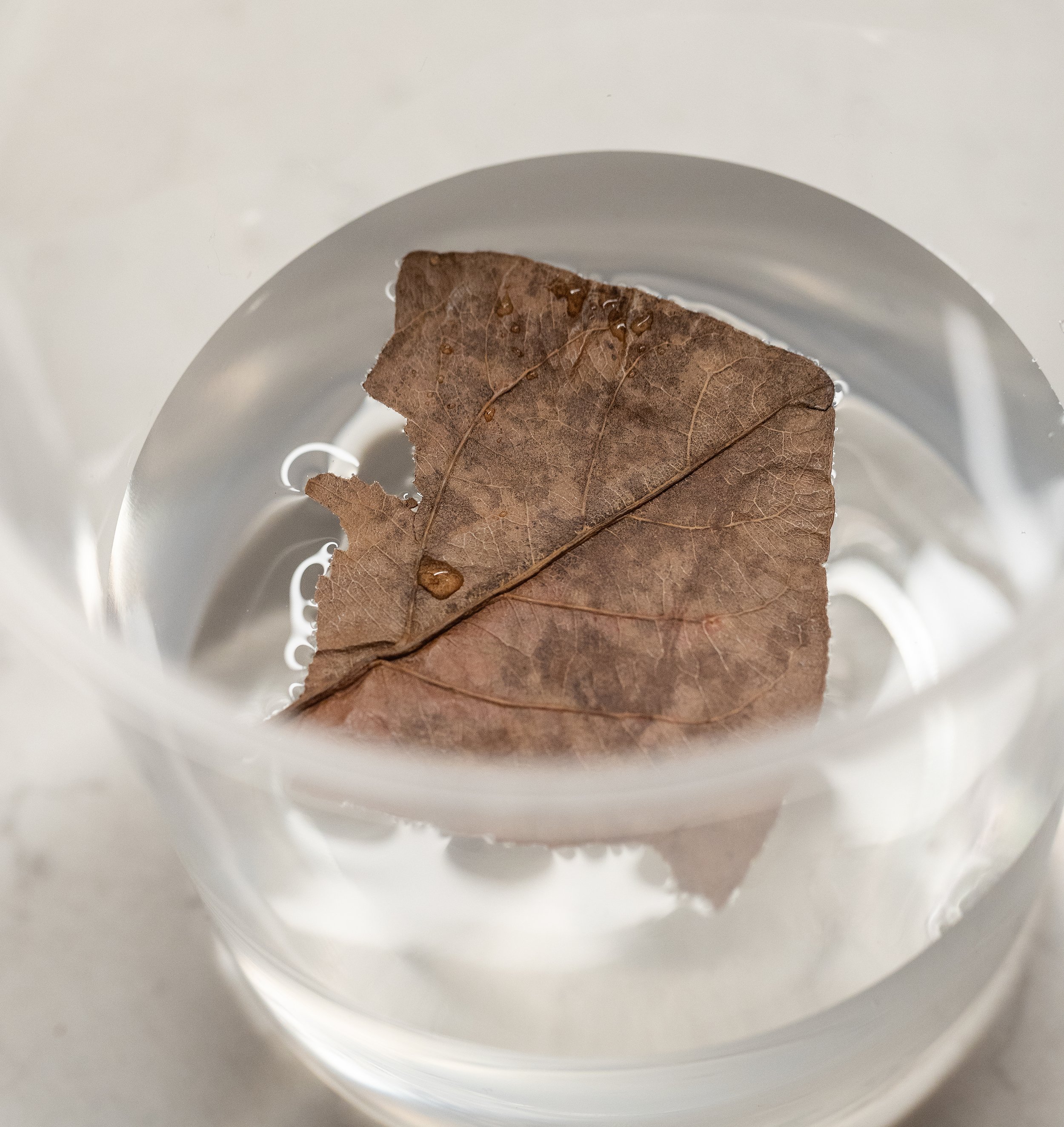
Add a piece of Indian almond leaf to the cup. Indian almond leaves, also called Catappa leaves, release tannins into the water which helps lower the PH level and creates a more natural environment for tadpoles. It provides potential antibacterial and antifungal benefits, making a healthier environment for the tadpoles. As the leaves decompose, they release more tannins into the water and provide a small amount of food for the tadpoles to graze on. In addition, the brown coloration of the water from the tannins can create a more calming environment for the tadpoles. Some people boil a bunch of the leaves to speed up the process to make “tadpole tea”. Mix some of this water with the RO or spring water.
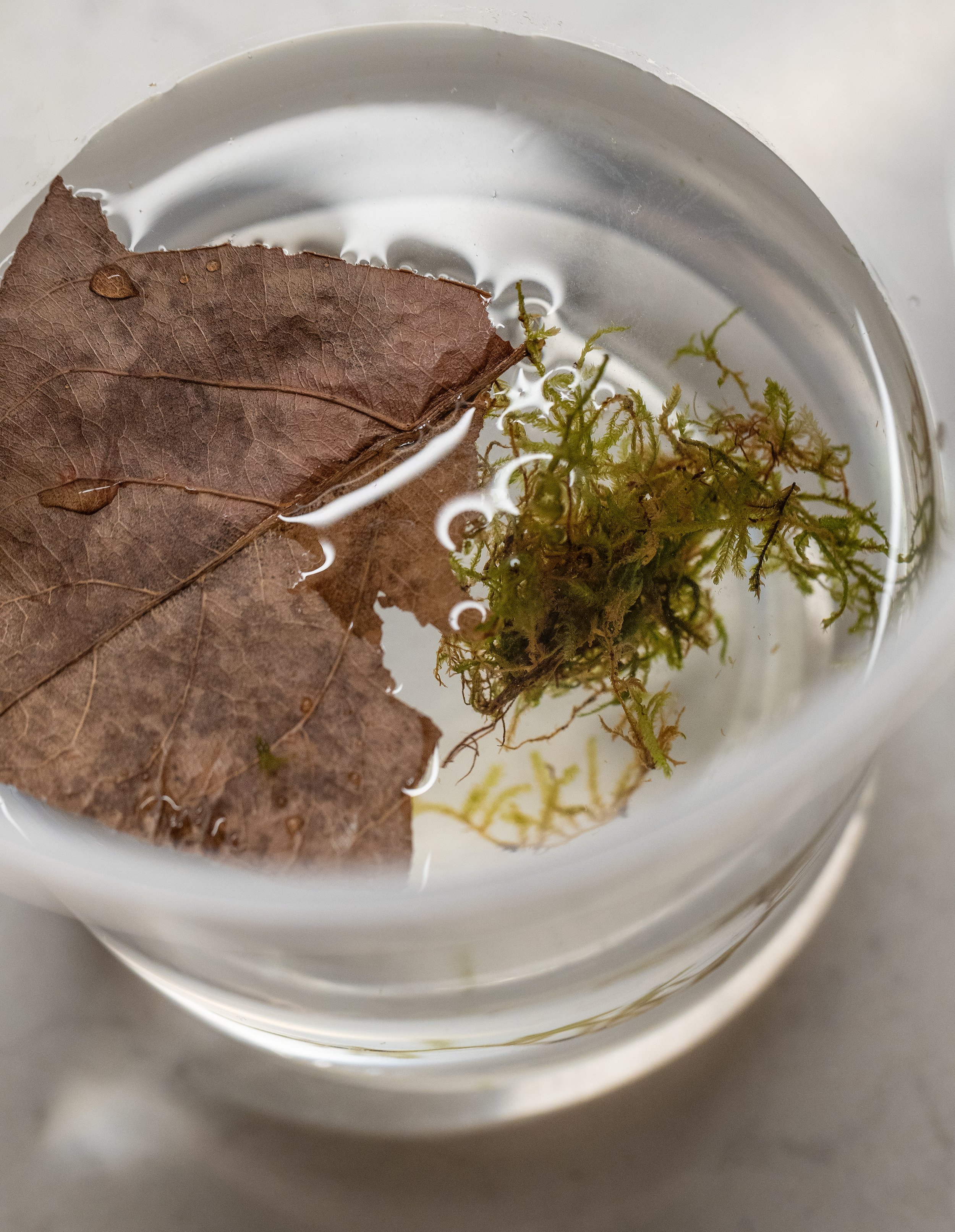
Add a small bunch of Java moss to the cup. It provides a safe hiding place for the tadpoles, acts as a food source by growing algae on its surface, and helps filter the water by absorbing excess nutrients.
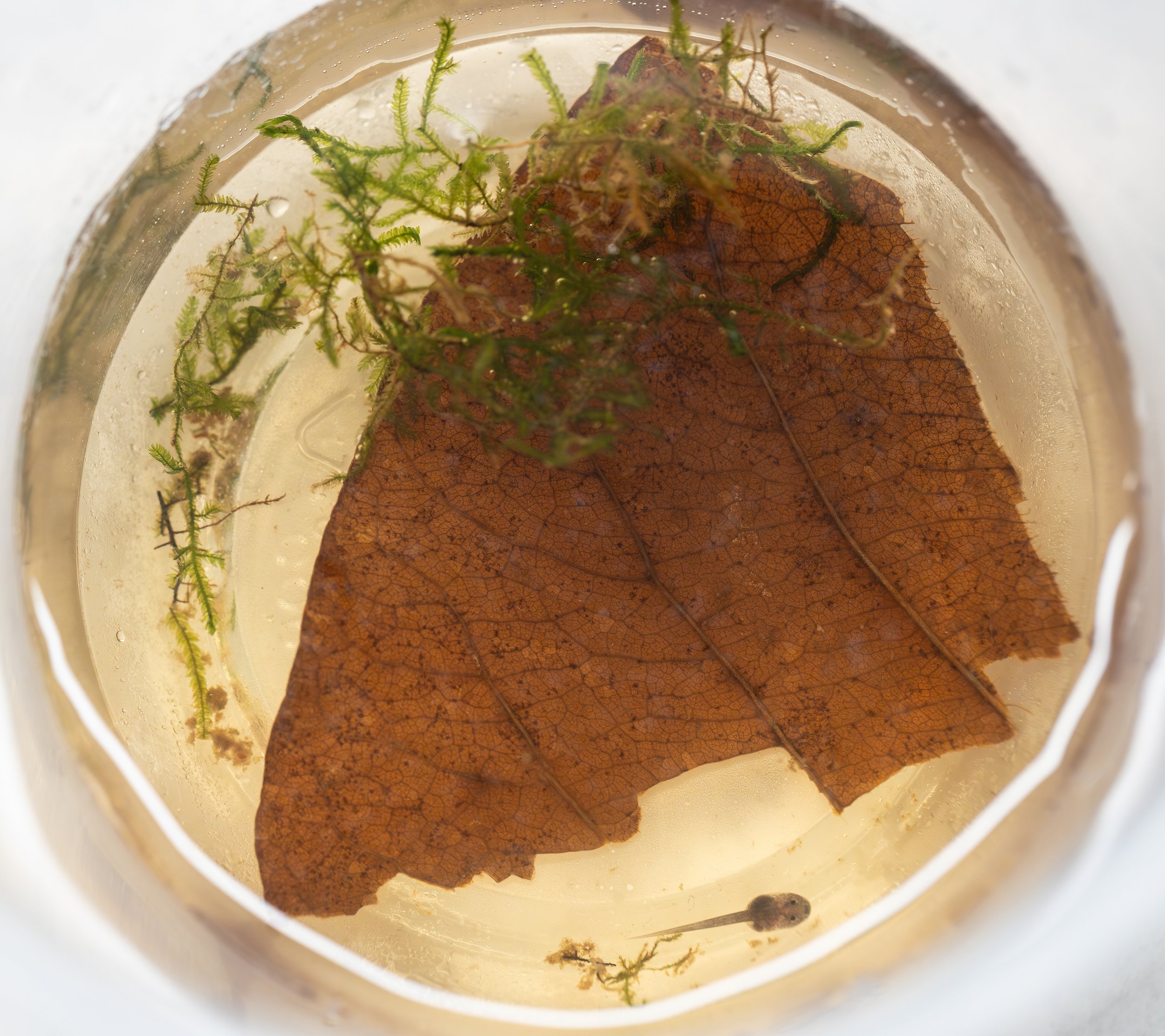
It’s time to add a tadpole to the cup!
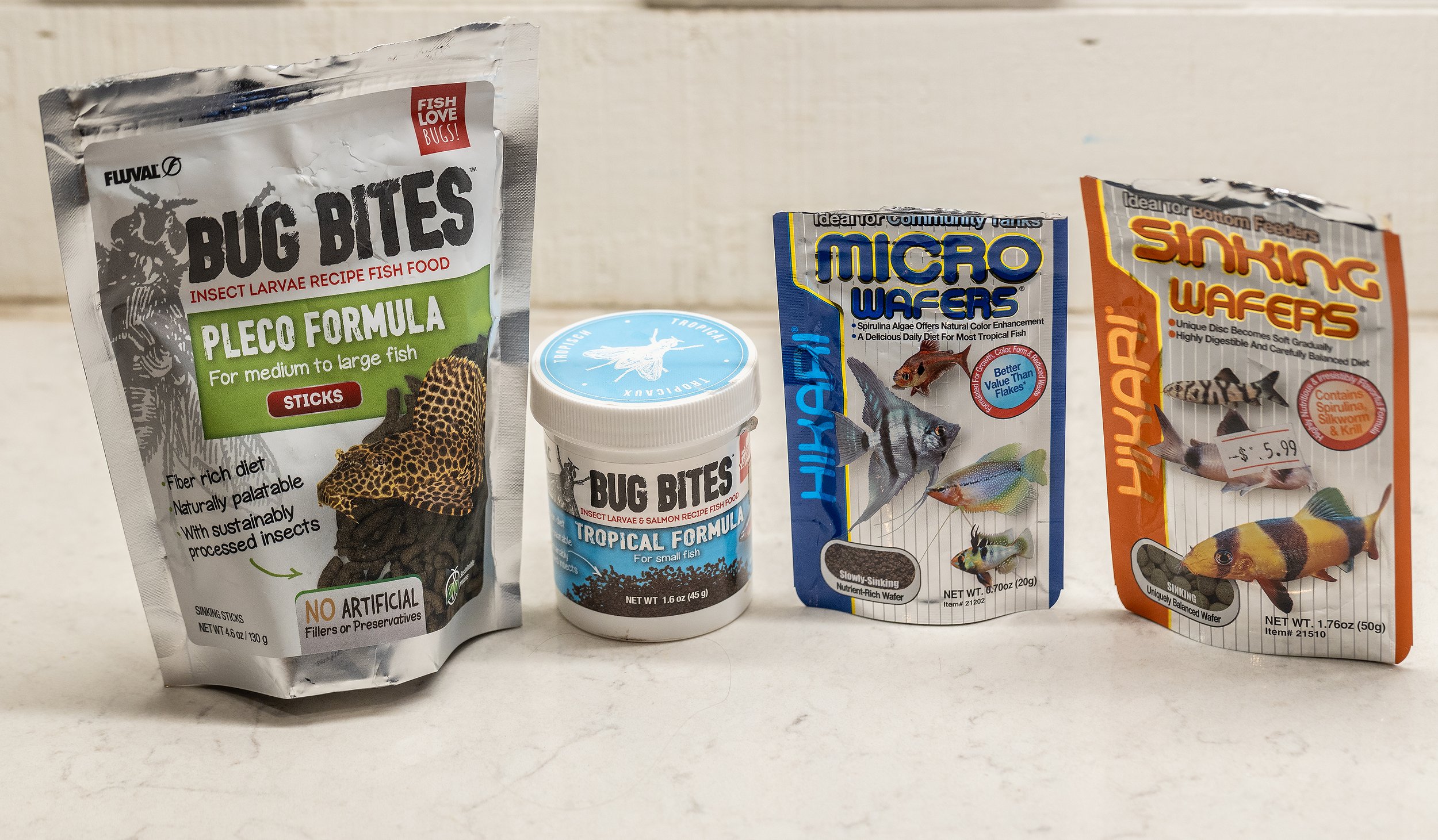
Feed the tadpole a very small amount of tadpole food a couple of times a week, which can be commercial fish flakes/pellets or any of the commercially available tadpole food. I use four different fish foods for my tadpoles and rotate each feeding. An algae-based food and a higher protein food work great. If you notice food left in the container the next day, be sure to remove it with a turkey baster so it doesn’t foul the water. As the tadpoles grow, the amount and frequency of feedings will increase. I do not feed any off my tadpoles more than 3-4 times a week.
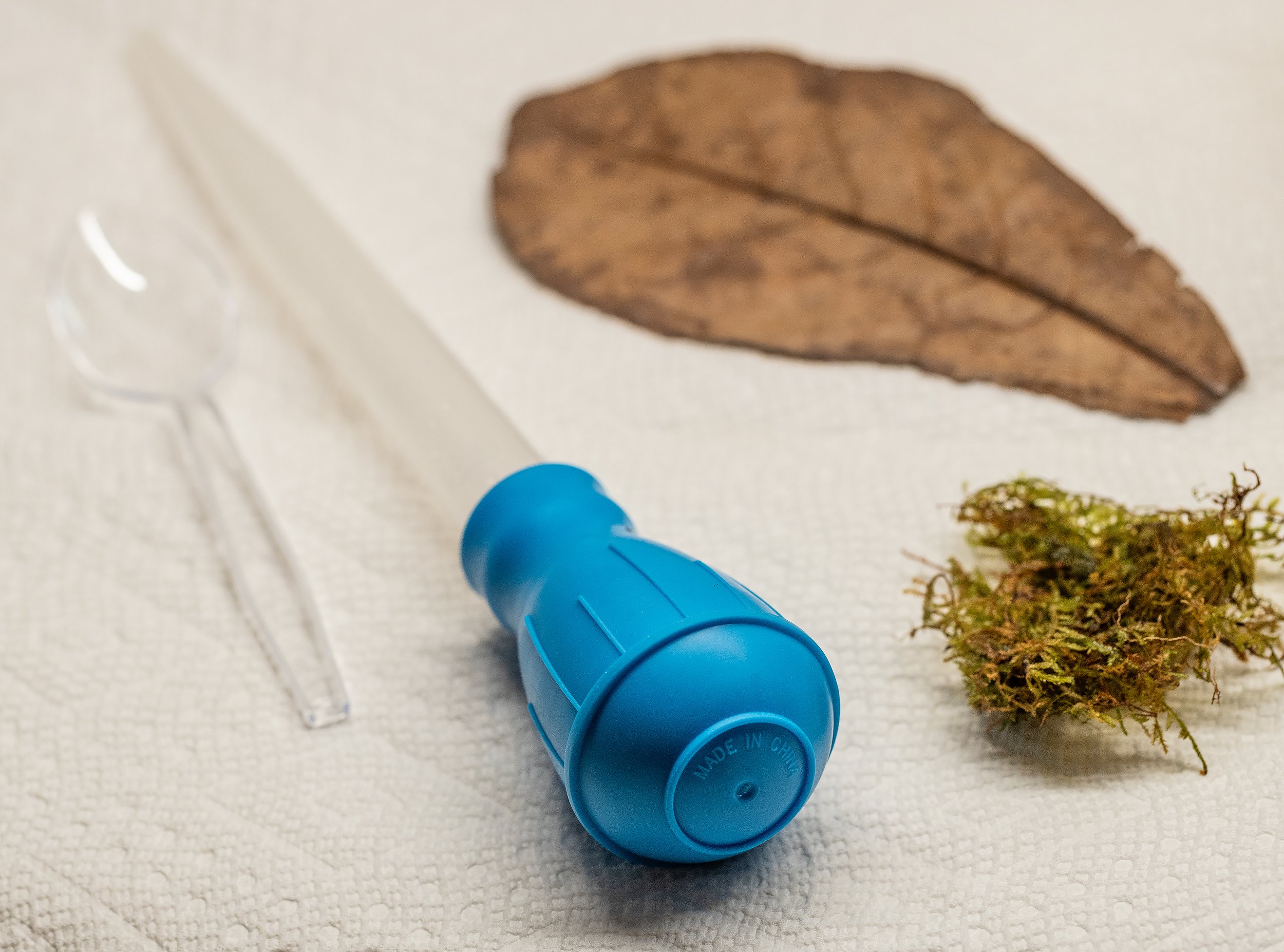
Regular maintenance is essential to maintain good water quality by regularly removing uneaten food and detritus and doing 50% water changes weekly. Water changes are easy in this type of setup. Use a turkey baster to remove the old water and replace with new water. It’s never a good idea to remove more than 50% of the water at a time.
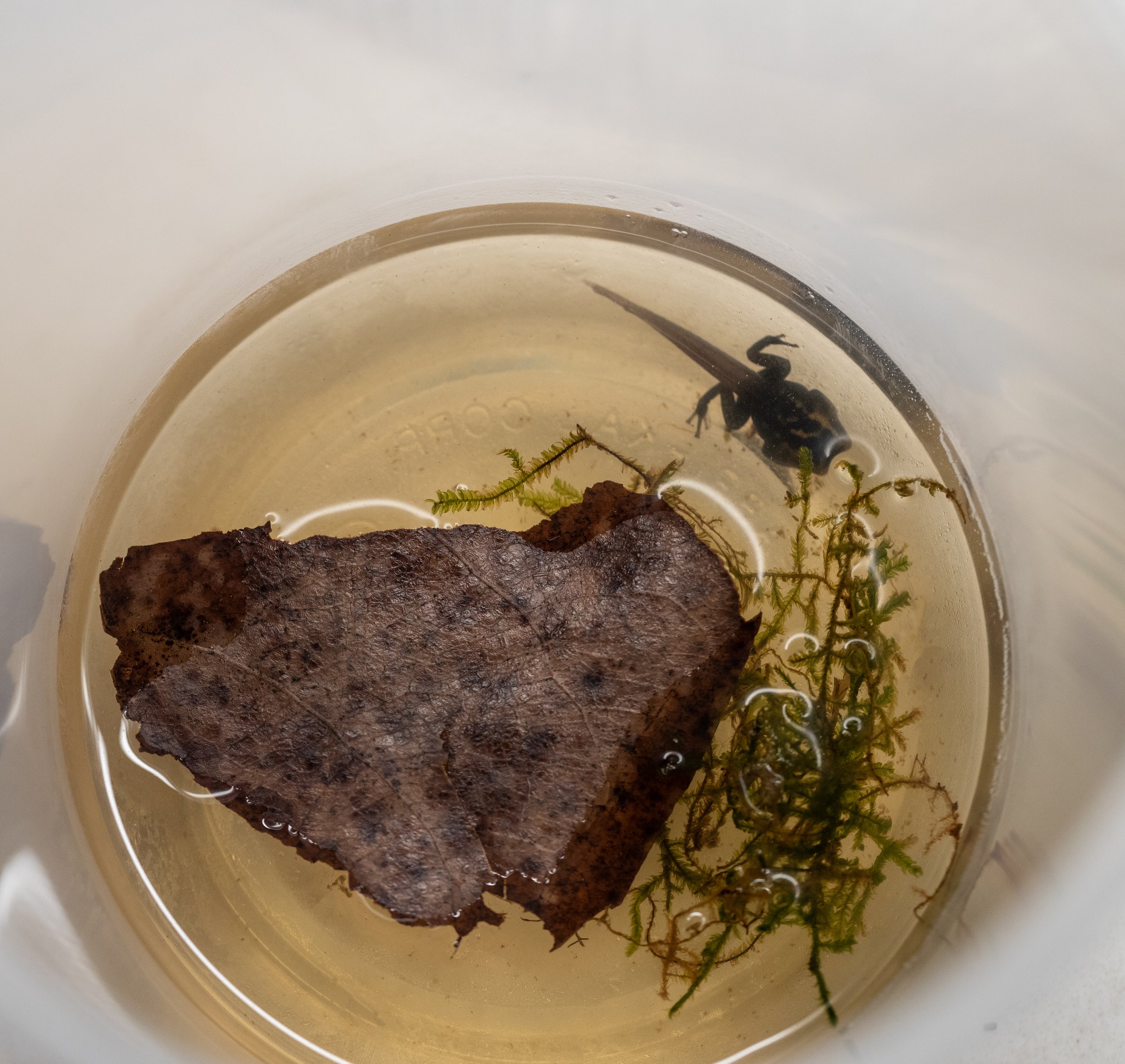
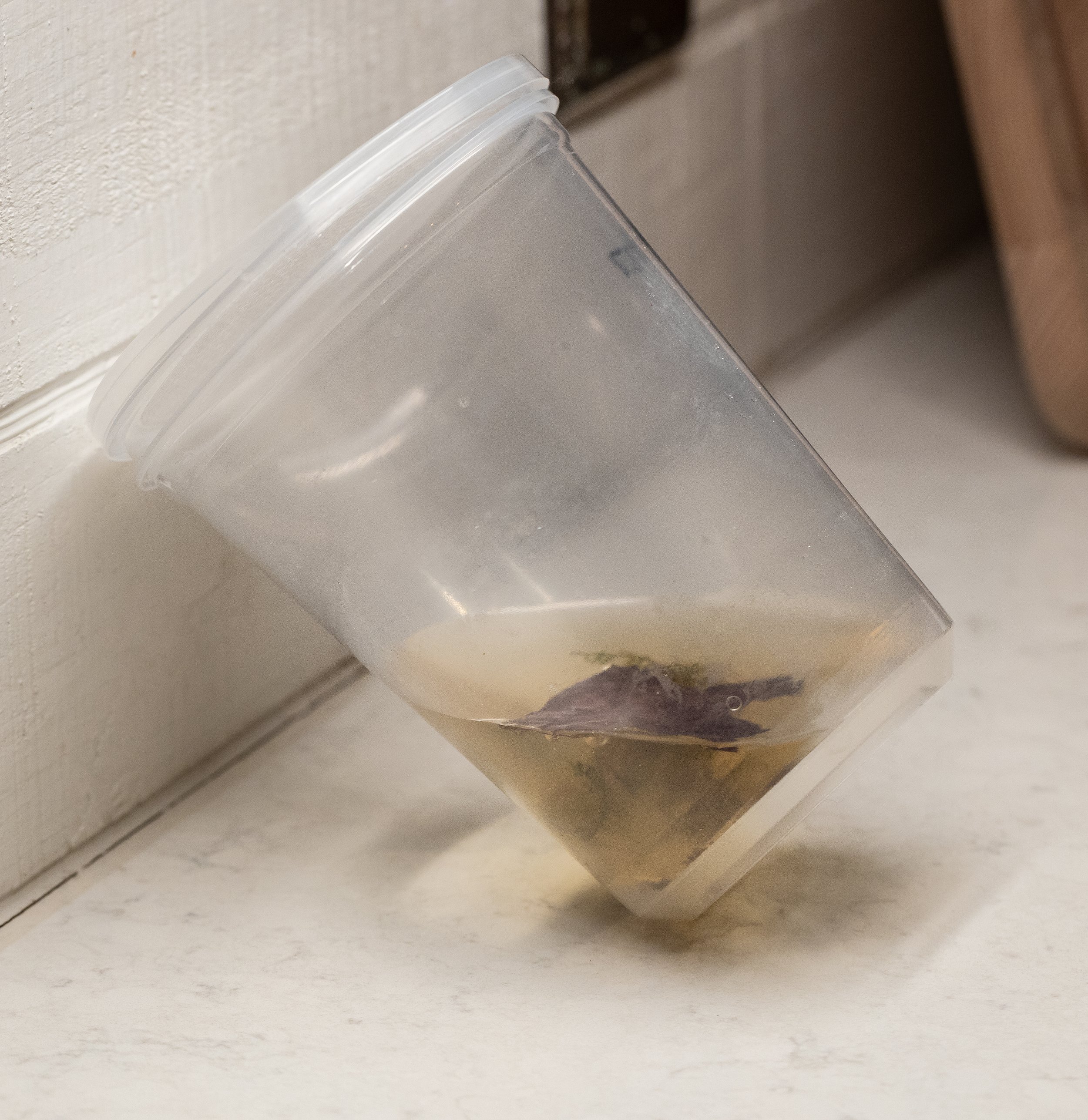
Place the cups in an area that has a normal day/night cycle and temps don’t fluctuate too much. As the tadpoles grow, you will notice the back legs first as they develop over time, then the front legs. After about 60-120 days (duration depends on the temperature of the water which should be about 68-74°F), the tadpoles will be ready to leave the water. Once you notice the front legs, put a waffle lid on the cup and keep it at a 45° angle. Once the froglet emerges from the water and has absorbed most of its tail, it’s ready to be moved to a grow-out enclosure. Stay tuned for an upcoming guide to raising froglets!
